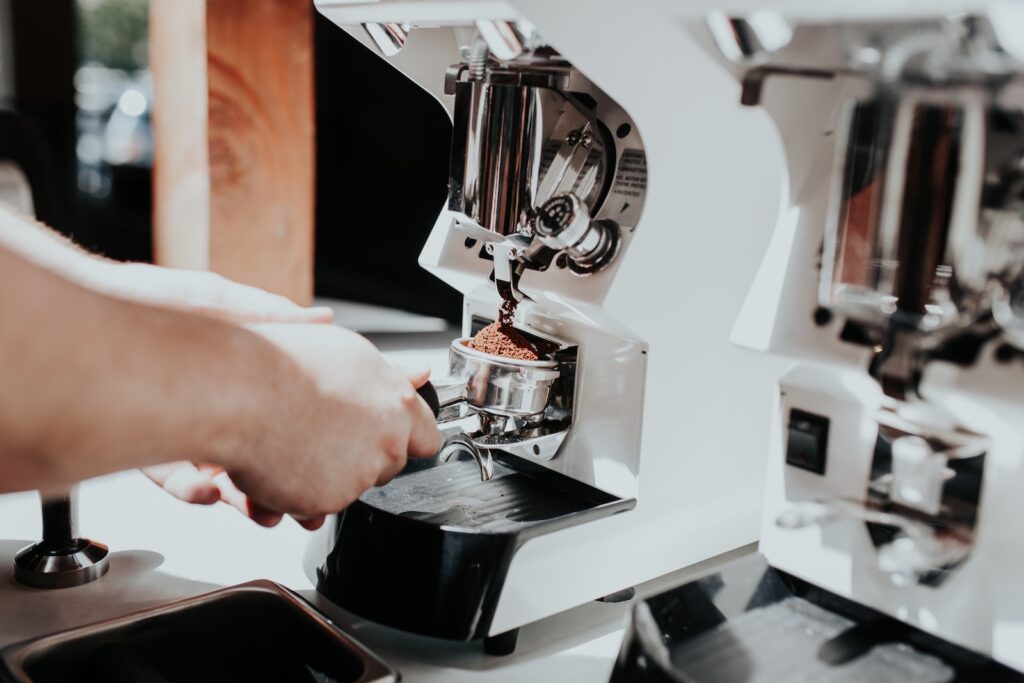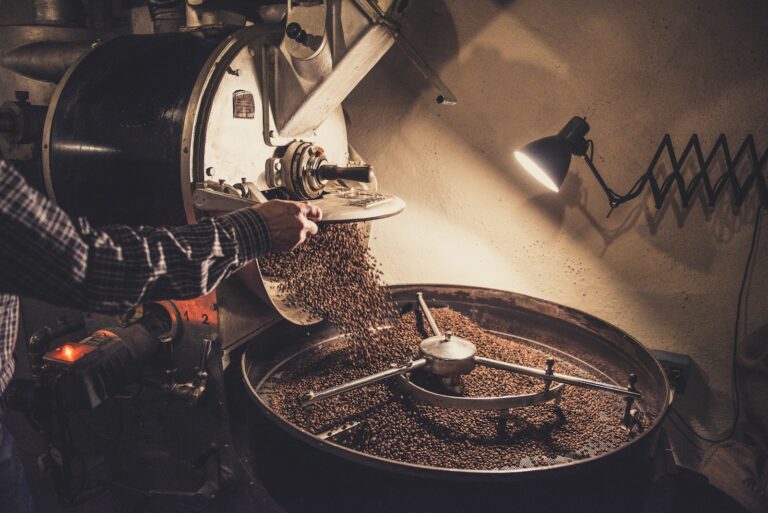Are you tired of settling for mediocre mornings and lackluster brews? Well, fear not, because we have the secret ingredient that will take your daily coffee ritual to new heights – a perfect coffee grinder. Whether you’re a casual caffeine connoisseur or an aspiring barista, this ultimate grinder’s guide is here to revolutionize your bean-grinding game. Get ready to dive deep into the world of grinders as we unlock the mysteries behind finding the one that tickles your taste buds and elevates your morning routine.
From burrs to blades, settings to materials – prepare yourself for an eye-opening journey toward achieving the perfect grind and unlocking unparalleled flavors in every sip. It’s time to become a true grinding guru; so grab your favorite mug, sit back with anticipation brewing in every pore, and let’s embark on this aromatic adventure together!
Introduction: Why Choosing the Right Grinder Matters

The taste and quality of your coffee depends greatly on the grinding process. It is often overlooked, but investing in a good quality grinder is just as important as choosing high-quality beans or using the right brewing method.
Why does it matter? Well, let’s start with the basics. A coffee grinder is responsible for breaking down whole coffee beans into smaller particles, which increases their surface area and exposes more oils and flavors. This process releases aroma, flavor, and ultimately determines how strong or weak your coffee will taste.
But why can’t we use pre-ground coffee instead of grinding our own? The answer lies in freshness. Once coffee beans are ground, they begin to lose their freshness at a rapid pace due to exposure to oxygen. Pre-ground coffee may have been sitting on store shelves for weeks or even months before being brewed, resulting in a stale and lackluster-tasting cup.
This is where having the right grinder becomes crucial – freshly ground beans immediately before brewing ensures maximum flavor extraction and produces a much tastier cup of coffee.
Understanding the Different Types of Coffee Grinders
When it comes to making a delicious cup of coffee, the type of grinder you use plays a crucial role in determining the quality and taste of your brew. The process of grinding coffee beans releases essential oils and flavors, which can greatly influence the final result. This is why it’s important to understand the different types of coffee grinders available on the market and how they work.
1] Blade Grinders:
Also known as propeller grinders, blade grinders are the most basic ones available and typically have a simple design with two blades spinning at high speeds to chop up the beans. These grinders are relatively inexpensive but do not offer consistent particle size as the grounds tend to be uneven. This can lead to an uneven extraction during brewing and ultimately affect the taste of your coffee.
2] Burr Grinders:Considered to be one of the best types of grinders for home use, burr grinders use two revolving abrasive surfaces (burrs) to grind beans into consistent particle sizes. They come in either conical or flat shapes and offer adjustable settings for various grind sizes, ensuring a more precise and even grind compared to blade grinders.
3] Manual Grinders:
As its name suggests, manual grinders require human power to operate them rather than electricity. They consist of a handle attached to a crank that rotates two burr plates, grinding beans as you turn the handle. Although these may take longer to use compared to other types, they are widely popular among coffee enthusiasts for their portability and ability to produce a well-ground coffee.
4] Electric Grinders:
Electric grinders are the most popular type of coffee grinder used in homes and commercial settings. They come in both burr and blade varieties, with more advanced models offering features such as programmable grinding time, grind size adjustments, and automatic shut-off. These grinders are generally faster and more convenient to use compared to manual ones.
5] Conical vs Flat Burr Grinders:
As mentioned earlier, burr grinders come in two shapes – conical and flat. Conical burr grinders have cone-shaped burrs that tend to be sharper and produce a narrower range of particle sizes, making them ideal for espresso lovers. Flat burr grinders have toothed rings that sit parallel to each other, producing a wider range of particle sizes suitable for various brewing methods.
In conclusion, investing in a good quality grinder is crucial for achieving a delicious cup of coffee at home. Consider your preferences and budget when choosing between the types of coffee grinders available to find one that suits you best.
Blade Grinders vs. Burr Grinders: What’s the Difference?
When it comes to selecting a coffee grinder, one of the biggest decisions you’ll have to make is between blade grinders and burr grinders. Both types have their own unique features and benefits, so it’s important to understand the differences between them in order to choose the right one for your needs. In this section, we’ll break down the key differences between blade grinders and burr grinders.
Blade Grinders:
Blade grinders are aptly named because they use sharp blades to grind coffee beans. These blades are typically made of stainless steel and work by slicing through the beans multiple times until they reach the desired consistency.
One of the main advantages of a blade grinder is that it is usually more affordable than a burr grinder. This makes it a popular choice for beginners or those on a budget. Another benefit is that blade grinders are usually smaller and take up less counter space, making them ideal for those with limited kitchen space.
However, there are also some drawbacks to using a blade grinder. The most noticeable is that they tend to produce an uneven grind due to their chopping motion. This can result in an inconsistent extraction which can affect the taste of your coffee. Additionally, because the blades generate heat as they spin, this can also lead to over-extraction and burnt flavors in your coffee.
Burr Grinders:
On the other hand, burr grinders use two revolving abrasive surfaces (burrs) – one fixed and one moving – to crush and grind the coffee beans. The gap between the burrs can be adjusted to achieve a specific grind size, allowing for more precision and control over your coffee.
One of the main advantages of a burr grinder is that it produces a much more consistent grind compared to blade grinders. This is because the beans are ground between two evenly spaced burrs, rather than being chopped by blades. This results in a more even extraction and a better-tasting cup of coffee.
Burr grinders also offer more control over the grind size, which is important for different brewing methods. For instance, if you’re making espresso, you’ll need a fine grind, while French press requires a coarser grind. With a burr grinder, you can easily adjust the settings to achieve your desired consistency.
The main downside of burr grinders is their higher cost compared to blade grinders. They also tend to be larger and take up more counter space, so they may not be suitable for those with limited space.
How to Use and Maintain Your Coffee Grinder Properly
Using and maintaining your coffee grinder properly is crucial for achieving the best quality of coffee. It not only ensures consistency in the grind size but also extends the lifespan of your coffee grinder. In this section, we will discuss some essential tips on how to use and maintain your coffee grinder correctly.
1] Understanding Different Types of Grinders:
Before we delve into proper usage and maintenance, it’s important to understand the different types of grinders available in the market. There are two main types – blade grinders and burr grinders. Blade grinders use spinning blades to chop up the beans, whereas burr grinders crush them between two moving parts. Burr grinders are considered superior as they produce a more consistent grind size.
2] The Right Grind Size:
The right grind size can make or break your cup of coffee. Each brewing method requires a specific grind size, so it’s essential to know what type of grind is suitable for your chosen brewing method. For instance, French Press requires a coarse grind while Espresso needs an extra fine grind.
3] Dosage:
It’s necessary to measure out the exact amount of beans before grinding as it affects the strength and flavor profile of your coffee greatly. Depending on your taste preferences and desired strength, you can adjust the dosage accordingly.
4] Cleaning Regularly:
It’s crucial to clean your grinder regularly, especially after each use. Leftover coffee oils and residue can build up and affect the flavor of your future cups of coffee. For blade grinders, wipe the blades with a damp cloth and for burr grinders, remove the hopper and burrs and clean them with a brush or a cloth.
5] Using Unroasted Beans / Rice:
Another useful tip is to run unroasted beans or rice through your grinder. This helps to remove any lingering oils and residue from previous grinds, leaving you with a cleaner machine.
6] Replacing Burrs:
For burr grinders, it’s recommended to replace the burrs every 500-1000 pounds of coffee ground. This may seem like a lot, but it ensures that you always have sharp and efficient burrs that produce consistent grind sizes.
7] Storage:
When not in use, always store your coffee grinder in a dry place away from moisture or heat sources. This helps to prevent any damage or rusting of the internal parts.
Conclusion
Choosing the perfect coffee grinder can be a daunting task, but it is worth putting in the time and effort to find the right one for your needs. By considering factors such as burr type, grind settings, and budget, you can narrow down your options and select a grinder that will enhance your coffee brewing experience. With these tips in mind, happy grinding! Remember that freshly ground beans are key to achieving a delicious cup of coffee every time.







